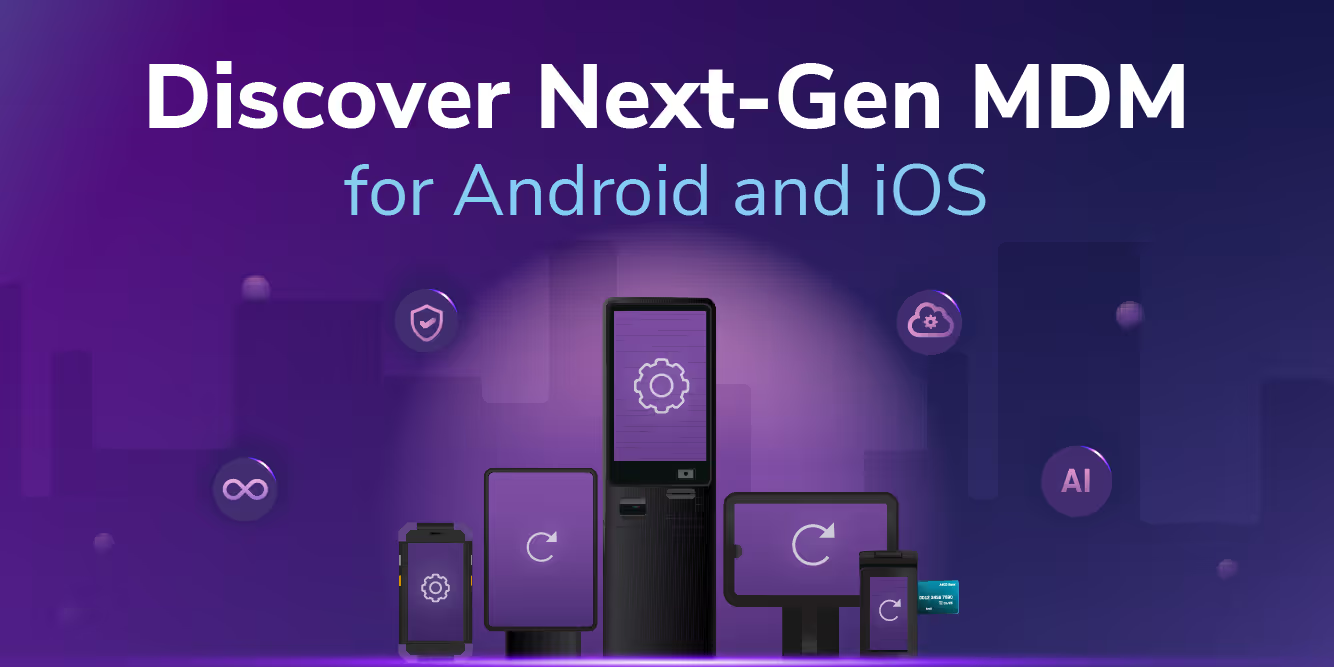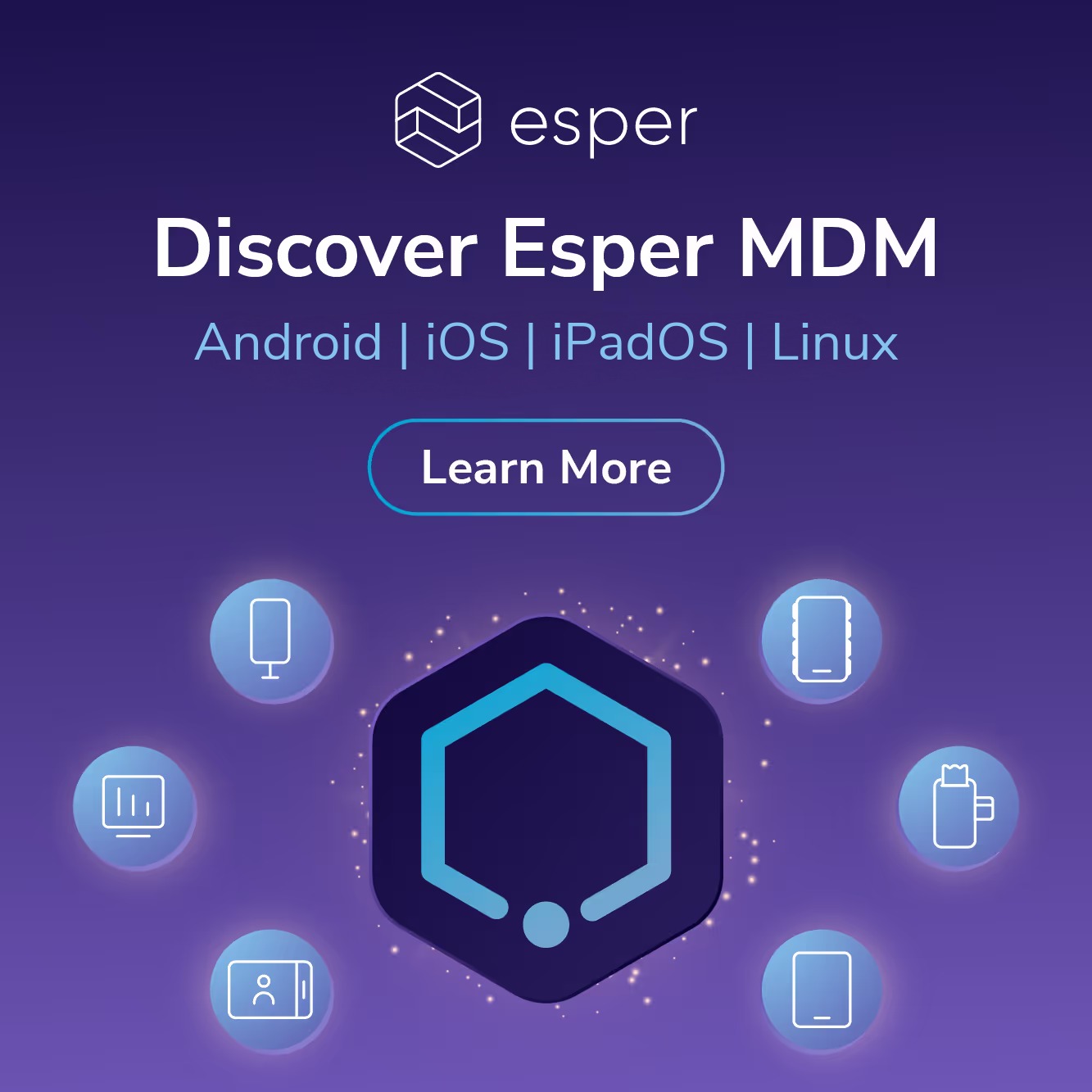When deploying Linux devices at scale — whether you're an OEM shipping thousands of devices or an enterprise managing a distributed fleet — the provisioning method you choose can make or break your deployment timeline. Esper's Linux Device Management offers two distinct approaches: Manual and Seamless Provisioning. Each serves different needs, and choosing correctly can save weeks of deployment time.
Let's dive into the technical details, trade-offs, and best practices for each approach.
Seamless vs Manual Provisioning Methods
Manual Provisioning: Quick Start for Existing Fleets
Manual provisioning is exactly what it sounds like — a hands-on approach where you run a provisioning script on each device. Here's how it works:
- Navigate to Provisioning Methods → Linux → Manual in your Esper console
- Select a blueprint (your desired device configuration)
- Copy the generated shell command
- Execute it on each Linux device via terminal
# Example provisioning command (simplified)
curl -s https://provision.esper.io/linux | sudo bash -s -- \
--tenant your-tenant \
--blueprint production-pos \
--token xyz123The device registers itself with Esper, downloads the agent, and applies your blueprint configuration — all from a single command.
Seamless Provisioning: Zero-Touch for New Deployments
Seamless provisioning embeds the Esper agent directly into your Linux image, enabling true zero-touch deployment. The process involves two phases:
Phase 1: Device Registration
- Add device serial numbers to Esper
- Pre-assign devices to groups and blueprints
- Configure device metadata before they even power on
Phase 2: Image Integration
- Download the Esper .deb or .rpm package for your configuration
- Integrate it into your Ubuntu/Debian/Redhat ISO build process
- Devices automatically provision on first boot
Technical Deep Dive: How Each Provisioning Method Works
Manual Provisioning Under the Hood
When you run the manual provisioning script, several things happen:
- Dependency Check: Verifies system requirements (systemd, networking, etc.)
- Agent Download: Pulls the latest compatible agent for your distribution
- Registration: Authenticates with your tenant using the provided token
- Configuration: Downloads and applies the assigned blueprint
- Service Setup: Configures the Esper agent as a systemd service
Advantages:
- No image modification required
- Works on already-deployed devices
- Immediate feedback on provisioning success/failure
- Perfect for proof-of-concepts and pilots
Limitations:
- Requires physical or remote access to each device
- Manual process doesn't scale beyond hundreds of devices
- Human error potential (wrong blueprint, typos, etc.)
Seamless Provisioning Architecture
Seamless provisioning takes a different approach by becoming part of your image:
- Pre-Registration: Devices exist in Esper before they're are installed with OS
- Image Integration: Agent installed during OS build, not runtime
- First-Boot Activation: Device registers to the Esper on the first boot and is ready to use
- Zero-Touch Config: Blueprint automatically applied based on pre-registration
Advantages:
- True zero-touch deployment
- Scales to thousands of devices
- Eliminates field technician errors
- Supports offline initial setup
Limitations:
- Requires image build pipeline modifications
- More complex initial setup
- Less flexibility for ad-hoc deployments
Choosing the Right Method: Decision Framework
When to Use Manual Provisioning
- Existing Fleet Migration: You have 500 Ubuntu-based POS systems already in the field. Manual provisioning lets you onboard them without touching your golden images.
- Proof of Concept: Testing Esper with 10-20 devices? Manual provisioning gets you running in minutes, not days.
- Mixed Environments: Managing devices from multiple vendors with different OS builds? Manual provisioning works regardless of the underlying image.
- Rapid Prototyping: Need to quickly test different blueprints and configurations? Manual provisioning provides immediate feedback loops.
When to Use Seamless Provisioning
- New Product Lines: Launching a new line of Linux-based kiosks? Build Esper into your image from day one.
- Large-Scale Deployments: Deploying 1,000+ edge compute boxes? The time invested in seamless provisioning pays dividends at scale.
- Restricted Environments: Devices deployed in locations where technicians can't access terminals? Seamless is your only option.
- Compliance Requirements: Need to guarantee every device has management from first boot? Seamless provisioning ensures no gaps.
Real-World Device Onboarding Scenarios
Scenario 1: Retail Chain Migration
A retail chain with 2,000 existing Ubuntu-based POS terminals chose manual provisioning with automation:
- Created regional provisioning scripts
- Deployed via their existing remote access tools
- Completed migration in 6 weeks with 99.5% success rate
Scenario 2: IoT Device Manufacturer
An edge computing OEM integrated seamless provisioning:
- Modified their Yocto Linux build to include Esper
- Pre-registered devices during QA testing
- Achieved true zero-touch deployment for customers
Scenario 3: Restaurant Technology Provider
A KDS (Kitchen Display System) vendor used a hybrid approach:
- Manual provisioning for pilot customers
- Transitioned to seamless for scaled deployment
- Maintained manual option for customer-managed devices
Technical Considerations for Both Provisioning Methods
System Requirements
Both methods require:
- SystemD-based Linux (Ubuntu 18.04+, Debian 10+, RHEL 10+)
- 64-bit architecture (x86_64 or ARM64)
- Minimum 50MB free disk space
- Outbound HTTPS access to
*.esper.cloud
Security Implications
Manual Provisioning:
- Requires root/sudo access during setup
- Provisioning token must be protected
- Immediate verification of security policies
Seamless Provisioning:
- Security policies embedded in image
- No credentials exposed during deployment
- Consistent security baseline across fleet
Network Architecture
Essential firewall rules for both methods:
provisioningapi.esper.cloud(initial enrollment)mqtt.esper.cloud(ongoing management)telemetryapi.esper.cloud(device metrics)onboardingapi.esper.cloud(seamless provisioning)
How Do I Decide Which Provisioning Method Is Best for My Organization?
Here's a simple decision matrix:
Both provisioning methods have their place in a comprehensive Linux device management strategy. Manual provisioning gets you started quickly and handles edge cases, while seamless provisioning delivers the scale and reliability needed for production deployments.
The key is not choosing one over the other permanently, but understanding when each method serves your needs best. Start with manual provisioning to prove the concept, then graduate to seamless as you scale.
Currently supporting Ubuntu, Debian, and Red Hat distributions. Provisioning methods may vary slightly based on distribution and version.
FAQ
Keep Exploring


.png)











